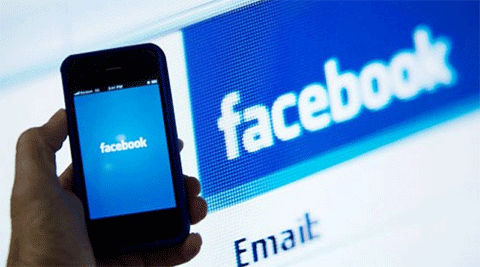 The three American social media giants – Facebook, Twitter and Google
– have emerged as a major player in the ongoing general elections in
India, with political parties and candidates competing with each other
in breaking the news, spreading their message through these outlets in
addition to those via the traditional media.
The three American social media giants – Facebook, Twitter and Google
– have emerged as a major player in the ongoing general elections in
India, with political parties and candidates competing with each other
in breaking the news, spreading their message through these outlets in
addition to those via the traditional media.While the impact of these social media on the elections could be known only after May 16 when the results are declared or could be a matter of another academic research, all the three major players have seen substantial increase in their India traffic and usage.
IE SPECIALS: SOCIAL TRENDS | ELECTION DASHBOARD
For instance Facebook has now 100 million users in India –its largest outside the US, while that of Twitter has more than doubled since January this year.
After the 7th round of polling, there were 49 million Indian elections-related conversations on Twitter — more than double the 20 million Indian elections-related conversations on Twitter for all of 2013.
In 2009, Sashi Tharoor was the only Indian politician to have a Twitter account and had 6,000 followers. Five years later there is hardly any major political leader who does not have an account on the micro-blogging site.
Tharoor is now the second most popular politician on Twitter with 2.16 million followers, after Narendra Modi, the BJP’s prime ministerial candidate with 3.89 million followers.
Modi now also has nearly 14 million fans of Facebook. Barack Obama is the only other politician to have more Facebook fans than Modi.
With political parties, leaders and candidates putting their advertisement on social media to reach out to their voters, all the three major players are reported to have made substantial addition to their revenue.
Though none of the companies are willing to discuss the advertisement revenue this election cycle, all of them have put in several months of tireless efforts and diverted substantial amount of their resources in the elections, many of them working thousands of miles away from India.
Facebook started working on the Indian elections towards the end of last year, says Katie Harbath, manager for Policy at Facebook, adding that the company started doing a series of things beginning March this year when the elections were announced.
This includes launch of election tracker so that people can see in real time. Candidates are now using Facebook and Twitter for breaking news
We are really seeing the entire country discuss the issues (related to elections),” Harbarth told PTI in a recent
interview.
“Facebook is really the key place of the conversation that is happening,” she said.
Adam Sharp, Head of Government and Nonprofits at Twitter, who has been involved in participating in elections in various countries of the world, said Twitter is a powerful way to return to retail politics. He
While the majority of the users of social media are concentrated in urban areas, the elections have also helped them expand their reach to the rural areas too.
Before the elections, the use of social media was generally restricted to the national political parties, but as the general elections gained momentum, even regional parties joined the social media bandwagon.
In a recent interview, Raheel Khursheed, head of news, Politics and Government, Twitter India, said the electoral landscape of social media has changed forever in India.
“Twitter has now become an integral part of Indian elections,” Khursheed told PTI.
The sheer size is a major challenge for them, concedes Harbarth.
“It is just exciting to see, how much social media is being used in the election,” she said.
In addition to the volume and size, Twitter officials said the nine-phased elections are another major challenge.
While the majority of the users of social media are concentrated in urban areas, the elections have also helped them expand their reach to the rural areas too.
Before the elections, the use of social media was generally restricted to the national political parties, but as the general elections gained momentum, even regional parties joined the social media bandwagon.
In a recent interview, Raheel Khursheed, head of news, Politics and Government, Twitter India, said the electoral landscape of social media has changed forever in India.
“Twitter has now become an integral part of Indian elections,” Khursheed told PTI.
The sheer size is a major challenge for them, concedes Harbarth.
“It is just exciting to see, how much social media is being used in the election,” she said.
In addition to the volume and size, Twitter officials said the nine-phased elections are another major challenge.
